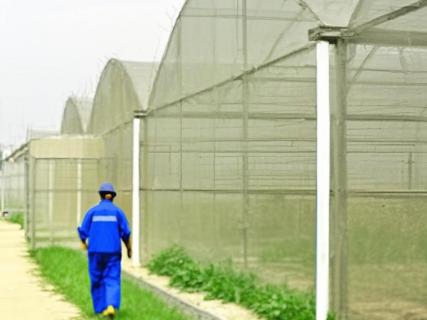Hey there, fellow gardeners and greenhouse enthusiasts! Today, let's dive into a game-changing tool for greenhouse gardening – insect netting. This isn't just any ordinary net; it's a real lifesaver for your plants, keeping those pesky bugs at bay. Trust me, it's more effective than you might think, and I'm excited to share all the amazing benefits it brings to the table.
A Shield Against Pests
Insect netting acts like a protective shield for your greenhouse, effectively blocking out common pests like cabbage worms, aphids, and whiteflies. With this barrier in place, these bugs can't reach your plants, and your leaves stay pristine. The best part? When used correctly, insect netting can achieve up to 95% effectiveness in pest prevention. That's way more efficient than constantly spraying pesticides.
Stopping Virus Spread in Its Tracks
We all know that some bugs are more than just leaf-munchers; they're virus carriers too. Insect netting serves as a formidable barrier, keeping these virus-spreading insects out and significantly reducing the incidence of viral diseases. For instance, studies have shown that using insect netting can lower the incidence of tomato yellow leaf curl virus by a staggering 80%. That's a huge reduction in potential crop loss.

Climate Controller for Your Greenhouse
Insect netting isn't just about pest control; it also helps regulate the climate inside your greenhouse. During the sweltering summer months, temperatures inside a greenhouse can soar, making it tough for plants to thrive. But with insect netting, the temperature inside the greenhouse stays close to the outside levels in the early morning and evening, and it can be 1℃ lower than outside during the midday heat. This helps prevent issues like flower and fruit drop in plants like peppers.
In the early spring, insect netting can provide a bit of extra warmth, keeping the inside temperature 1-2℃ higher than outside and the ground temperature 0.5-1℃ warmer. This small boost can protect your plants from frost and get them off to an early start. Plus, by blocking some rainwater, insect netting reduces humidity in the greenhouse, minimizing the risk of diseases.
Reducing Pesticide Use
Pesticides have long been a go-to solution for gardeners, but with insect netting, you can drastically cut down on their use. For example, instead of spraying pesticides weekly on cucumber plants, you might only need to do it 2-3 times throughout the entire growing season. This not only saves you money on pesticides but also reduces environmental pollution and ensures your produce is healthier and more eco-friendly.
Boosting Crop Yield and Quality
With insect netting, your plants grow in a stable, pest-free environment, leading to better yields and higher quality produce. Take eggplants, for example. With insect netting, the fruits are smoother, more vibrant, and there are fewer deformities. In fact, yields can increase by up to 50%. These tangible benefits mean more profit and a more rewarding gardening experience.

Durable and Cost-Effective
Insect netting is built to last. Made from durable materials like polyethylene, it can withstand the elements and last for 4-6 years, or even up to 10 years with good quality. This long-term investment pays off, reducing your overall gardening costs and providing consistent protection for your plants.
Flexible Application Options
Insect netting is incredibly versatile and can be adapted to fit your specific greenhouse setup and needs. For smaller greenhouses, you can cover just the ventilation openings and entrances, which is effective for pest control without compromising airflow and sunlight. For larger greenhouses, full coverage provides comprehensive protection. This flexibility makes insect netting a practical solution for any size of greenhouse.
A Win-Win for Your Greenhouse
When you add up all the benefits, it's clear that insect netting is a win-win for your greenhouse. It reduces pesticide use, lowers costs, boosts yields, and protects the environment. For example, in a 1000 square meter greenhouse, you could save $1000 a year on pesticides and increase your revenue by $5000 through higher yields. That's a significant return on investment.
In conclusion, insect netting is a fantastic tool for any greenhouse grower. It keeps pests out, viruses at bay, and provides a stable environment for your plants to thrive. If you haven't tried it yet, now's the time to give your greenhouse the protection it deserves. Your plants – and your wallet – will thank you.
Welcome to have a further discussion with us.
Phone: +86 15308222514
Email: Rita@cfgreenhouse.com
Post time: Jun-27-2025







 Click to Chat
Click to Chat